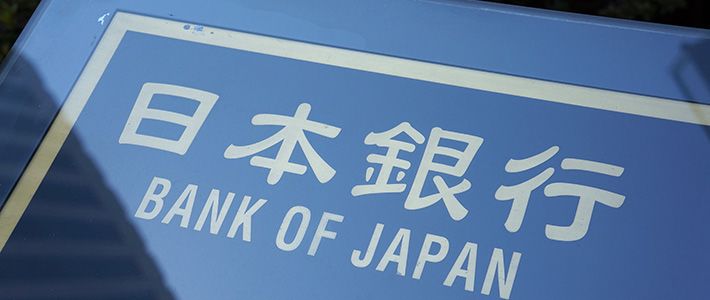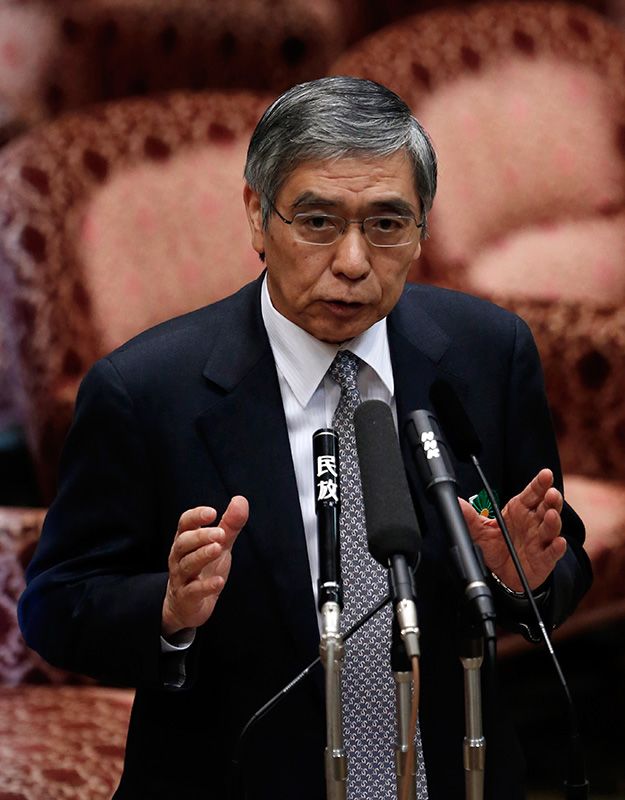
Profile of Kuroda Haruhiko, Governor of the Bank of Japan
Politics Economy- English
- 日本語
- 简体字
- 繁體字
- Français
- Español
- العربية
- Русский
 Born in Fukuoka Prefecture in 1944. Graduated from the University of Tokyo in 1967 and joined the Ministry of Finance. Took office as Governor of the Asian Development Bank in February 2005. (Photo: Reuters/AFLO)
Born in Fukuoka Prefecture in 1944. Graduated from the University of Tokyo in 1967 and joined the Ministry of Finance. Took office as Governor of the Asian Development Bank in February 2005. (Photo: Reuters/AFLO)
Since Abe Shinzō’s second stint as prime minister began in December 2012, the yen has fallen somewhat from its punishingly high levels and stock prices have shot up. Recently, there has also been a changing of the guard at the Bank of Japan, where the previous governor, Shirakawa Masaaki, stepped down on March 19, 2013. His replacement, Kuroda Haruhiko, is a former alternate governor of the Asian Development Bank. Iwata Kikuo, a professor at Gakushūin University, and Nakaso Hiroshi, former executive director of the Bank of Japan, took office as deputy governors.
First Ex-MOF Official in 15 Years
The governor of the Bank of Japan is a government appointment, chosen by the cabinet and requiring the approval of both houses of the Diet. The usual political wheeling and dealing notwithstanding, the decisive input this time came from reflation-minded economists like Hamada Kōchi, professor emeritus at Yale and Abe’s most influential economic advisor. Reflation—which aims to restore a moderate degree of inflation in order to return an economy to long-term trends after a period of deflation—has become the main pillar of “Abenomics.”
Kuroda is the first Ministry of Finance official to be appointed governor since Matsushita Yasuo, who held the job from December 1994 to March 1998. Even vice-ministers have found the appointment elusive. As well as talent and a degree of personal popularity, a governor needs to have connections within the ruling party. Political timing is also important. The previous practice of alternately appointing Ministry of Finance and Bank of Japan personnel to the post of governor has been abandoned since the bank was made independent in the revised Bank of Japan Act in 1998. The appointment of someone like Kuroda, with a background in taxation and global finance at the Finance Ministry, is unprecedented.
Leading the Push for Inflation Targets
The government and the Bank of Japan have agreed on a policy that will aim to achieve 2% inflation within two years. A strong relationship between the governor and the government will be essential for implementing this policy. In this regard, Kuroda is exceptional, having been an advocate of inflation targets during his time as vice minister of finance for international affairs. After retiring from that position, he worked as a professor of economics at Hitotsubashi University before taking office as president of the Asian Development Bank in February 2005. Kuroda’s experience is likely to stand him in good stead in negotiations with counterparts from other central banks at platforms such as meetings of the Bank for International Settlements.
The government and Bank of Japan’s plan to overcome deflation is not without risks. Some people are worried about the possible side effects of ambitious monetary easing and a cheaper yen. Will it be possible to shake off deflation without triggering adverse side effects? As the debate continues, people will be watching the bank’s Monetary Policy Meeting closely for signs of further expansion in the bank’s easing policy. Money markets around the world will be watching with interest.
(Original published in Japanese on March 21, 2013.)
A further round of quantitative easing was agreed at the Monetary Policy Meeting on April 3–4. For more details, see the article Abenomics: Changing the National Mindset.